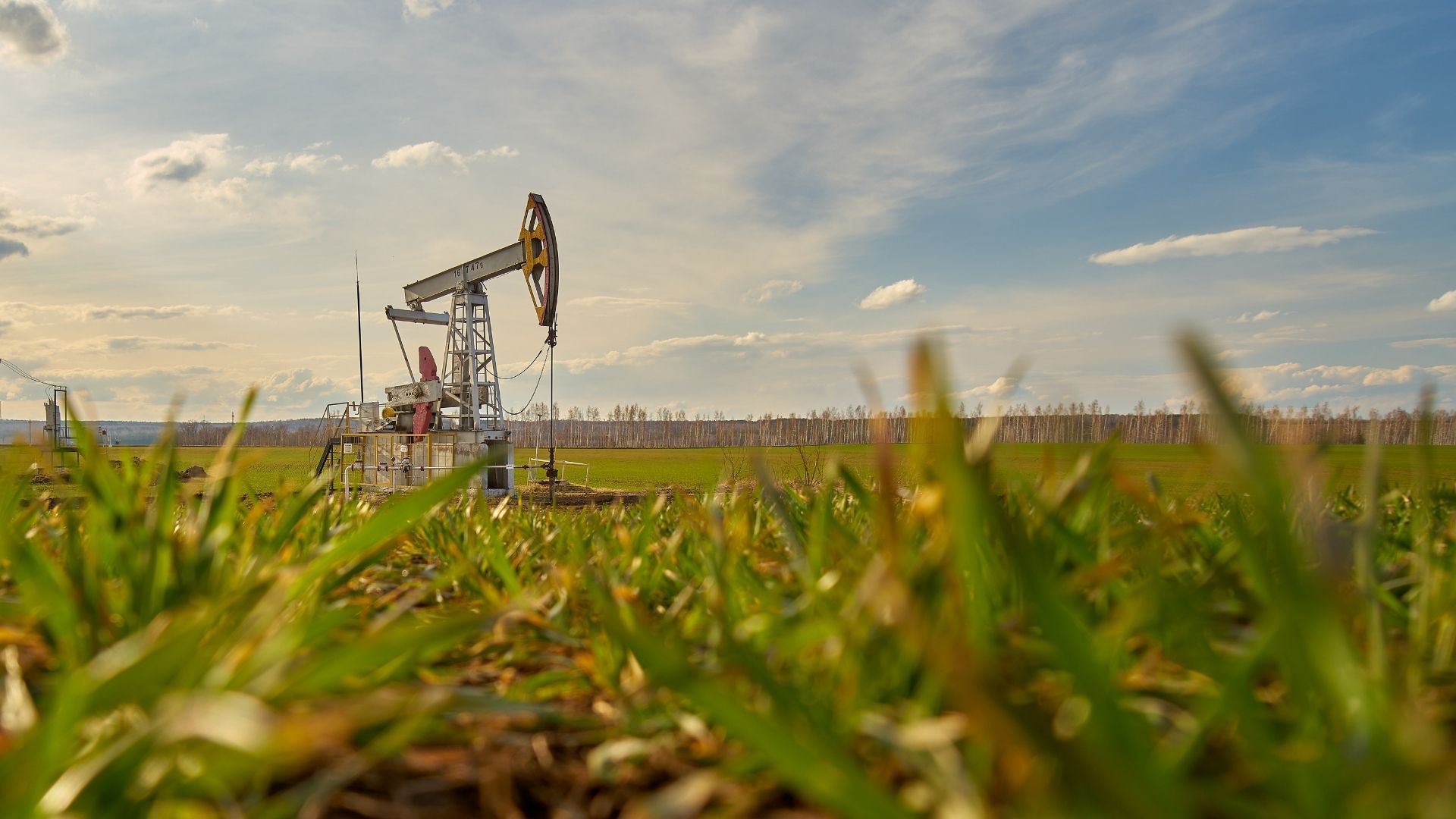THE LOWDOWN ON THE MARKETING BUDGET FOR OIL AND GAS: HOW TO BREAK IT DOWN
It’s your job to figure out how to get your phone to ring. For weeks you have been trying to figure this out. You lean forward and tap your keyboard to wake up your computer.”Maybe I’ll just Google it.”
Getting a website to show up on Google search results is a lifeline to any business today. As we visit with folks in the industry, we hear a couple of common refrains. First, there’s a shortage in the workforce in O&G. On top of that, your good guys get poached. You lose ’em because they are hired away by your competition.
And, second, if you are an oilfield service company, you gotta keep getting new business to keep the doors open, or the trucks running, or the guys busy.
GOOD TIMING
As for the first need, finding the people you need to connect with is not as hard as you might think. In fact, as the workforce in the oil and natural gas industry continues to get younger, reaching out will just get easier. According to a recent study by the American Petroleum Institute, millennials (those roughly 22 – 38 years old) are already well represented in the oil and gas industry. Today they are one third of the workforce, and performing in every role. From managers to engineers to procurement specialists, these guys (and gals) who have grown up online are rapidly becoming the people you need to reach. And the API study predicts that by 2025 this group will constitute 41 percent of a company’s payroll.
What does that mean for you? You just need to show up in the places where the millennials are. And, that’s online because they carry the Internet in their pockets.
Fortunately, this is a really good time to develop your online presence. Because, honestly, most of your competitors have not. (See our recent report on the digital footprint of 100 oil and gas companies working in Oklahoma.) They have ignored their websites and not used their social media. Maybe the web wasn’t important before. But, that’s not the case today. Now, it is not only important, a web presence is vital. The good news is – the neglect by your competitors is your opportunity. Jump ahead of them and get out front. Beat the competition and position your company as the leader. Let them be the ones to play catchup to you.
HOW TO DIVVY UP THE MARKETING SPEND: TRADITIONAL THOUGHTS
Okay, now you know why the web is important – because more than 1/3 of the workforce eats, sleeps, and lives with their mobile devices in hand. How should you spend a marketing budget to reach them?
As a start, we do not recommend that you totally reject traditional advertising. Let’s look at a few. The phone book? No, that’s last century. But, what about trade shows? Yes, trade shows still bring you some value by getting your team face-to-face with folks. Then, what about advertising in trade publications? We are still a fan of trade pubs. Ads can deliver you exposure to your targeted audience. And ads can build your brand with them.
THE DIGITAL DEMAND
So, what about digital? This is where you need to put your biggest investment because there is more long-lasting value for your promotional spending. We’ll explain that a little later.
Do you need a website? Yes, without a doubt. A website is your hub. It’s the place where you are in total control of the branding and message about your company. Go deep here. What about social media? Yes, millennials (and their spouses) are on social media every single day. You want to show up where they are. Paid digital advertising? Yes, you will need to do some paid digital advertising on Google and on social media to help your content be displayed to the right people.
- 30% – Website/SEO/Content Marketing
- 30% – Social media management
- 20% – Trade shows
- 10% – Trade publications
- 10% – Paid digital advertising
BREAKING DOWN THE DETAILS
WEBSITES – 30%
The biggest portion of your marketing budget should be devoted to building your website and promoting it “organically.” This means that you want to develop strategies that will get people to come to your site “naturally” rather than through “artificial” methods, these latter being paid advertisements.
Organic marketing encompasses a variety of practices that flip the right switches so your website content shows up on Google’s search results page. These practices include SEO, adding content regularly to your website, building links back to your website, and good social media engagement. All of the “organic” marketing practices offer a strong payoff over time.
Social media management – 30%
Next, an equivalent amount of your marketing budget should be spent on social media. Here you want to develop a following on three different social media platforms. Your following consists of employees, potential employees, stakeholders, business partners and relations, and others interested in the oil and gas sector.
Gineers Now magazine’s article about marketing for oil and gas recommended utilizing these social networks for the industry:
Linkedin is best avenue for brand building and lead generation. There’s a gamut of oil and gas engineers, managers, and leaders who are frequently browsing on their news feed. Twitter is the best medium for spreading your latest news while Facebook is your best medium to engage with your stakeholders and employees.

A consistent presence on social media is an important ingredient in a successful digital campaign. Depending on your company’s needs, the platforms you concentrate on may differ slightly from others in the industry. However, for the progressive in mind, consider Instagram. Especially consider Instagram if your audience is Millennials. Many in the 22- 38 age group prefer a daily dose of Instagram over some of the other social media platforms.
How frequently should you post on social media? Daily is optimal. Posting every day with a variety of content types will keep your followers interested and engaged. If you hire a content marketing team to take care of your content development, they can manage the regular releases on your website and your posts to social media. Moreover, they can build momentum on your networks and deliver a solid return from an ever-growing loyal audience.
Read this article for more information about social media for companies serving in the oil and gas industry.
TRADE SHOWS – 20%
Where traditional marketing is concerned, setting up a booth at a trade show is still a good way to get your name out in front of industry-related people. It allows you to get acquainted with new folks – especially business connections. The trade show expense is encountered in the cost of booth space, booth branding/signage, manpower, travel, food, collateral, and swag. After the event, about the only thing of value that continues to promote your business is your beer koozie, multi-tool, or keychain. The greatest value of trade shows lie in the connections made during the show.
TRADE PUBLICATIONS – 10%
Like trade shows, trade pubs are another opportunity to reach a targeted niche. The optimal value here comes when you run advertising consistently in the publication. Notably, there are some traditional advertising stats that say potential customers need to see an ad seven times before they buy. Some research takes that point even further and indicates that you have to see an ad seven times before the ad is even noticed. Whichever stat is correct, the key takeaway is that consistency and frequency in your advertising is important.
PAID DIGITAL ADVERTISING – 10%
Google Adwords and paid social media ads are the counterpoints to the organic marketing mentioned earlier. Organic marketing requires time. It takes time to build a repertoire of content that answers pertinent Google queries. Content must be well-woven with industry-related keywords and phrases so Google knows when to show your webpage (as opposed to your competitor’s webpage) to answer someone’s search question.
Paid ads are the “artificial” (as in not “organic”) way to get in front of your search audience. They give you the opportunity to buy your position on the Google results page. Your Google ads will target your audience using your industry keywords and phrases so you can jump ahead of your competition.
Similarly, to get your name and your content in front of your audience on social media, these days you have to “pay to play.” Most of the social media sites force businesses to pay for ads that boost those businesses’ content so it will show up in their followers’ news feeds. With some social media sites – notably Facebook – one might be obliged to pay just to reach more of the news feeds of one’s own followers. Or the effort might get you into non-followers’ news feeds. Either way, you’re helped. But you’ve “paid to play.” And, while there is an on-going expense involved, social media ads allow you to rifle-shot-target your audience so you don’t waste advertising budget by delivering your ad to people who are not interested. Social advertising is sophisticated and can get you in front of the right audience on LinkedIn, Twitter, and Facebook.
MAPPING OUT THE BEST PLAY
The investment in a website, content marketing, and social media keeps on delivering results. Unlike the paid advertisements that stop working when the ads stop running, the content that you put on your website and social media is a valuable resource that can be viewed weeks, months, and years after it is posted. In fact, as your content development increases your digital footprint, it increases the value of your business in the eyes of Google and in the eyes of your consumers.
For further reading on oil and gas marketing
Here are some of our most popular content on marketing for the oil and gas sector.
- We help you get found online.
- Digital Footprint Benchmark Report – Oklahoma, just like Texas, is under the radar when it comes to online marketing.
- Four Oil & Gas companies in Oklahoma do digital right.



